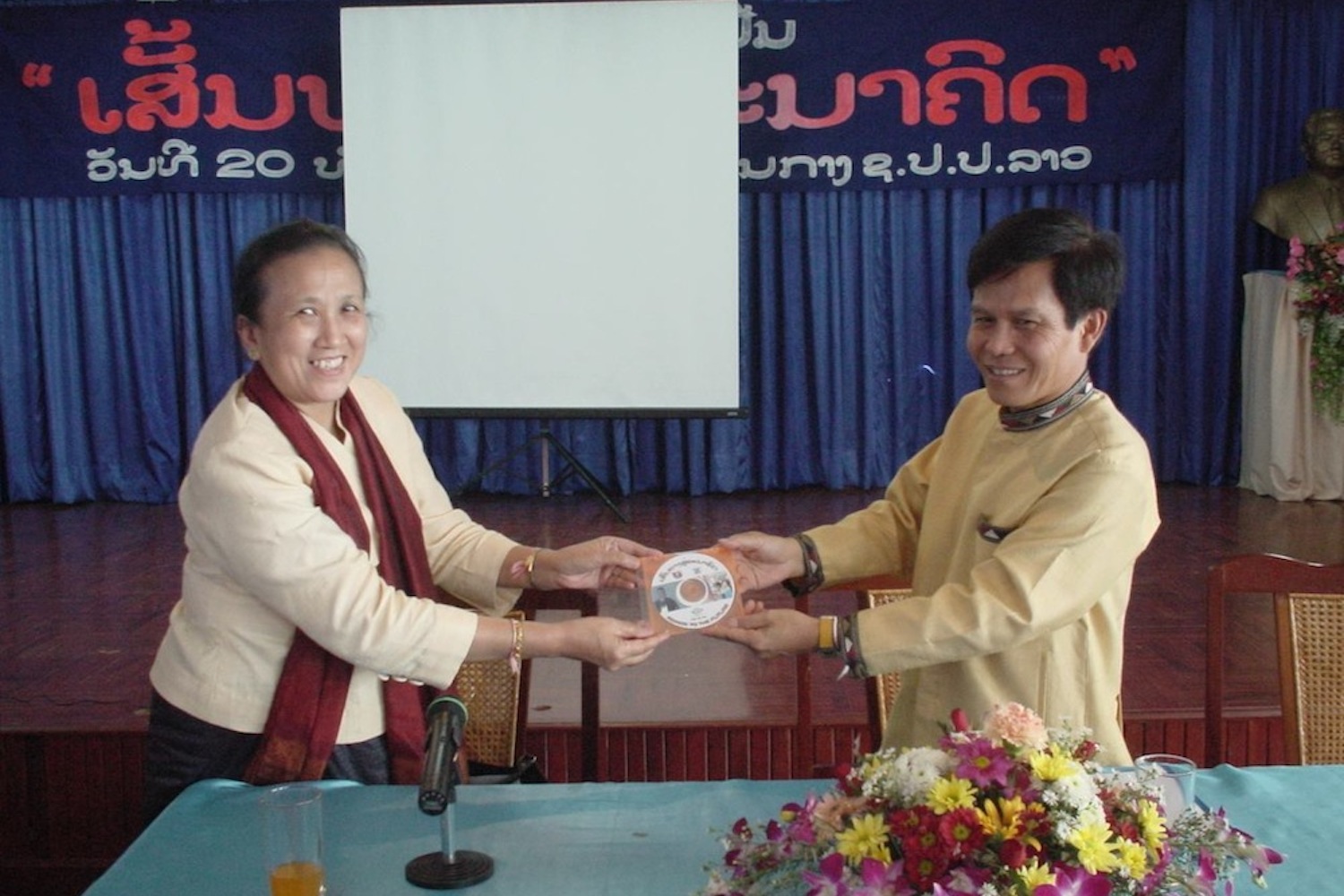Global Asia March, 2024
By Marwaan Macan-Markar
 Silencing of a Laotian Son: The Life, Work and Enforced Disappearance of Sombath Somphone
Silencing of a Laotian Son: The Life, Work and Enforced Disappearance of Sombath Somphone
By Ng Shui Meng
Spirit in Education Movement and International Network of Engaged Buddhists, 2022, 268 pages, $10 (Paperback)
For over 11 years, a Singaporean wife has been haunted by two questions about her Laotian husband: Where is he? What happened to him? She is Ng Shui Meng, who last saw Sombath Somphone driving his rundown jeep on a Saturday evening in Vientiane, the capital of Laos. She was in her car, ahead of Sombath’s, as they headed home for dinner. But he never made it. He was plucked off the streets after being stopped at a police post, bundled into a truck and has never been seen since.
Shui Meng’s ability to trace this chilling display of enforced disappearance serves as an apt opening to her book, which explores the unanswered questions that have haunted her, and the paths in Sombath’s life that led to this nightmare. But what helped her describe the shocking events on that fateful day — Dec. 15, 2012 — also says as much about the oppressive and opaque world of Laos, a communist-ruled, one-party state wedged between China, Vietnam, Cambodia and Thailand. Continue reading “Sombath’s Story: The Significance of One Marginal Life”


 Ng Shui Meng speaks of her husband Sombath Somphone in the present tense, with a firm matter-of-fact tone about his disappearance, a way, I presume, for her to maintain control in a situation where she has none and knows nothing but heartbreak. Yet I hear the deep sentiment behind the words. To her, Sombath is much more than the internationally acclaimed, award-winning development worker who vanished one night years ago. He is her partner, companion and mentor, a man with a quiet presence whom she relies on even in his absence. Although short and thin, he stood out in a crowd partly because of his shock of silver white hair. Most older Lao men dye their hair, she explains. Government officials all have black hair but Sombath has this head of white hair, and he always wears a cotton peasant jacket and yet there is something about him that makes everyone feel deferential toward him. That may have been a contributing factor to his disappearance, Shui Meng muses, this deference, the tranquil influence he has. He would never call himself an activist. He is not confrontational. Sombath believes in cooperation and works with Lao officials. In private he can be critical of the government but never in public. He’s a pragmatist and strategic about what he does. Although he is not political, he inspires people. Perhaps that is what led to his undoing.
Ng Shui Meng speaks of her husband Sombath Somphone in the present tense, with a firm matter-of-fact tone about his disappearance, a way, I presume, for her to maintain control in a situation where she has none and knows nothing but heartbreak. Yet I hear the deep sentiment behind the words. To her, Sombath is much more than the internationally acclaimed, award-winning development worker who vanished one night years ago. He is her partner, companion and mentor, a man with a quiet presence whom she relies on even in his absence. Although short and thin, he stood out in a crowd partly because of his shock of silver white hair. Most older Lao men dye their hair, she explains. Government officials all have black hair but Sombath has this head of white hair, and he always wears a cotton peasant jacket and yet there is something about him that makes everyone feel deferential toward him. That may have been a contributing factor to his disappearance, Shui Meng muses, this deference, the tranquil influence he has. He would never call himself an activist. He is not confrontational. Sombath believes in cooperation and works with Lao officials. In private he can be critical of the government but never in public. He’s a pragmatist and strategic about what he does. Although he is not political, he inspires people. Perhaps that is what led to his undoing.


 Sombath continues to be an inspiration to many in Laos and beyond. Those who struggle for justice, for sustainable development, for respect of fundamental rights deserve better than silence.
Sombath continues to be an inspiration to many in Laos and beyond. Those who struggle for justice, for sustainable development, for respect of fundamental rights deserve better than silence.
 In 2016 it will be 20 years since the Government of Laos (GoL) first announced its goal to graduate from Least Developed Country (LDC) status by 2020.1 During this time, much has changed. With the exception of a few years following the 1997 Asian financial crisis, economic growth has remained strong and in 2011 the World Bank raised Laos’ income categorization from a low-income economy to a lower-middle income economy.2 Foreign Direct Investment has also growing rapidly and strong progress has been made on a number of the country’s Millennium Development Goal (MDG) targets. This has led the UNDP to categorize Laos as the 6th most successful country for improved human development over the past 40 years.3
In 2016 it will be 20 years since the Government of Laos (GoL) first announced its goal to graduate from Least Developed Country (LDC) status by 2020.1 During this time, much has changed. With the exception of a few years following the 1997 Asian financial crisis, economic growth has remained strong and in 2011 the World Bank raised Laos’ income categorization from a low-income economy to a lower-middle income economy.2 Foreign Direct Investment has also growing rapidly and strong progress has been made on a number of the country’s Millennium Development Goal (MDG) targets. This has led the UNDP to categorize Laos as the 6th most successful country for improved human development over the past 40 years.3
